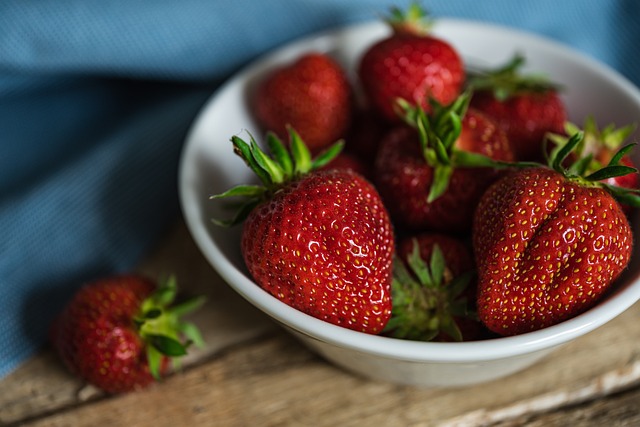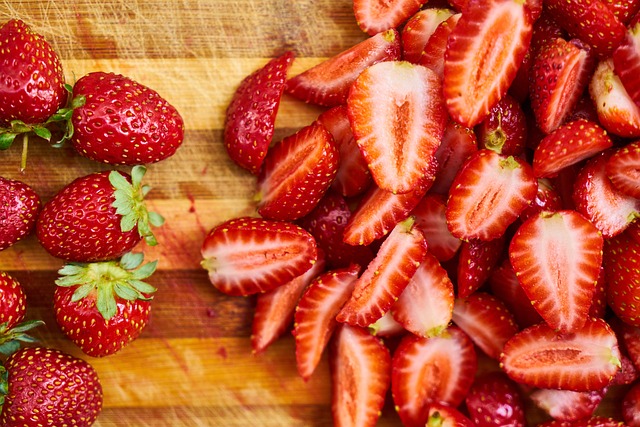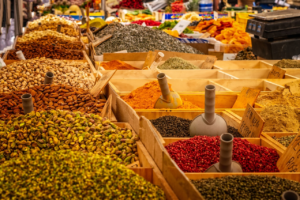Strawberries as a Source of Intestinal Parasites

While parasites are frequently ignored as a potential cause of illness in the United States, there are reasons for concern. A simple case in point are the findings of contamination in strawberries (and other berries). Studies around the world point to the fact that berries are often contaminated with human parasites. Some of these parasites, including giardia and cyclospora, can cause persistent diarrhea typically one week after exposure. However, some parasites may not produce immediate symptoms but can still have other health consequences. As such, it can be difficult, if not impossible to track down the source from which some parasitic infections were acquired.
While all raw produce carries risks for parasites, berries are known to be a frequent source. And both fresh and frozen berries are often grown locally and imported from other countries, expanding the scope of the problem. Unfortunately, studies from around the world have documented concerns.
South America
In Brazil, a study explored the level of human parasites found on strawberries. Sixteen separate farms were analyzed with a final rate of contamination of 56%. The study found a concerning array of human parasites, from blood flukes to parasitic worms, among others. Due to the findings, the authors recommended instructing farmers on safe handling of berries to decrease the level of contamination (Silva 2014).
A study exploring the problem of parasites and strawberries in Columbia also turned up concerning findings. The study tested for three different parasites, and found the presence of two, indicating fecal contamination. Toxoplasmosis, a parasite most commonly acquired from cats, was present in 5% of samples, where one sample (0.83%) was positive for cyclospora, a parasite that can cause explosive diarrhea and weight loss (Pineda 2020). It’s likely that only lower levels were found since the analysis only included three parasites.
Africa
Juicing fresh fruits may also concentrate contamination levels and increase the risks for parasitic exposure. A study from Egypt looked at several different fresh juices, including strawberry, mango, orange, lemon and sugar cane juice. Of the juices, strawberry was the most contaminated with 54% of samples showing detectable parasites (Mossallam 2010). Upon testing, some of the parasites still retained their infectivity within the juice.
Europe
A study out of the Czech Republic in Europe found that almost half of commercially available strawberries that were tested had been contaminated with stool. Not surprisingly, of these berries, 4.5% had detectable levels of parasitic DNA (Dziedzinska 2018). While the percentage of parasites was lower than in some studies, it’s still high enough that people who regularly consume raw berries are likely being exposed.
An older study out of Norway explored parasite contamination of raw produce. The study sampled a number of different types of produce, including strawberries. In the ten strawberry samples tested, 20% were found to carry giardia, a cause of diarrhea commonly known as “beaver fever (Robertson 2001).”
In Norway, samples of blueberries, strawberries and raspberries were examined for parasites from local markets. Three different parasites, toxoplasma, cyclospora and cryptosporidium, were identified occurring in 2.9%, 6.6% and 8.3% of samples respectively.
An interesting study out of Poland explored parasite levels on produce, including strawberries, from conventional and organic farms. Detection of parasites was through a microscopic technique, which likely undercounts actual levels. While they didn’t find parasites on strawberry samples in the study, numerous vegetables were contaminated. Levels of parasite eggs were higher on conventional produce, with 34.7% of samples being contaminated as compared to only 18.9% of organic samples (Klapec 2012).
North America
An older study from Mexico that used lower-tech microscopic approaches to identify parasites in strawberry samples still turned up contamination. The study relied on samples prepared through three different methods and found protozoan cysts and one worm egg (Felix 1996). In the study, contamination levels were described as present, but minimal.
Berries Have Antiparasitic Properties

While the levels of parasites found on berries, and other produce, raise concerns, it’s interesting to note that berries may also provide some protection. Research on the anti-giardia effects of berry extracts found that the berries were as effective as medication for killing giardia parasites (Anthony 2011).
It’s possible that the problem of parasites on berries isn’t worse than it is due to these antiparasitic effects. Compounds found in berries could provide some protection against infection when eating raw berries that are contaminated, although this has not been proven and could vary based on the type of parasite present.
Rinsing and Cooking
Fortunately, there are some techniques that can help mitigate the risks. One study found a dramatic reduction in parasite levels from berries by rinsing in cold water for one minute. In the study, a one-minute rinse reduced parasite levels by 80% (Temesgen 2021).
To almost fully ensure safety, berries could also be cooked. When treated with high temperatures, parasites are killed and rendered non-infective. Generally, temperatures over 161°F (72°C) inactivate most parasites (Gerard 2019).
Conclusion
Berries are one of my favorite foods and I often recommend their consumption. Due to the higher levels of contamination of berries throughout the world, it’s obvious that farming practices need to be improved to reduce contamination. While I’m not going to stop eating berries, depending on their source, it may make sense to cook your berries or rinse them well before consumption.



